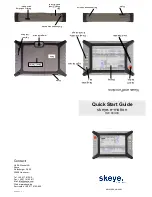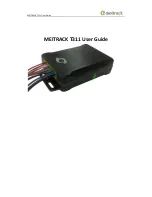
1-17 TM106601_(7/01)
USE OR DISCLOSURE OF DATA CONTAINED ON THIS PAGE IS SUBJECT TO THE
RESTRICTION ON THE TITLE PAGE OF THIS DOCUMENT
.
C
O M M A N D
S
Y S T E M S
D
I V I S I O N
clearance between the bulkhead and the antenna. This mounting adaptor is not necessary when using
a 10" or 12" antenna.
1.6 EQUIPMENT OPERATION AND CONTROLS
Do not operate the radar during refueling
operations or in the vicinity of trucks or
containers containing flammables or
explosives; do not allow personnel within 15
feet of area being scanned by antenna when
the system is transmitting.
Tests involving the radiation of RF energy by the
radar antenna must not be made while the radar
antenna is directed toward close-by large metal
objects such as hangers, doors, or the inside of
the hanger. Use test or standby mode where
applicable.
1.6.1 Operating Precautions
Flash bulbs can be exposed by radar energy.
Since storm patterns are never stationary, the display is constantly changing, and continued
observation is always advisable where areas of turbulence prevail.
1.6.2 License Requirements
A Private Aircraft Radio Station License is required to operate this system when installed in an
aircraft. The Federal Communication Commission (FCC) has type-accepted and entered this
equipment as "Telephonics Type RT-1601 Radar Receiver Transmitter". When completing Form
404, Station License Application, the exact description must be used.
WARNING
CAUTION


































![Navig[8]r NAVBIKE-GPS User Manual preview](http://thumbs.mh-extra.com/thumbs/navig-8-r/navbike-gps/navbike-gps_user-manual_3574097-01.webp)













